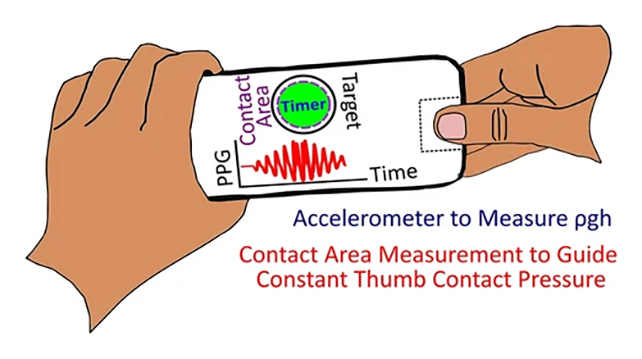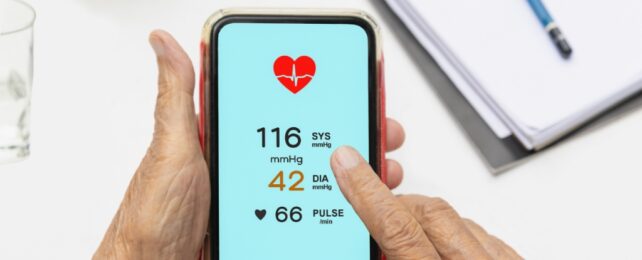High blood pressure (or hypertension) increases the risk of health problems such as heart or kidney failure, but goes undiagnosed in millions of people.
A newly developed Android phone app is able to remotely estimate pressure in a person's arteries as their heart squeezes, providing potentially life-saving details on individual health without the need for specialized equipment.
Developed by a team led by researchers from the University of Pittsburgh, the app works by taking a variety of readings from the accelerometer, camera, and touch sensors built into modern smartphones.
Rather than having to take a trip to the doctor or use a dedicated device, individuals might one day be able to make use of the phone in their pocket, making the innovation particularly important in underserved populations where access to medical care is limited.

"In underserved populations, many people don't have access to blood pressure cuffs, regular doctor's appointments, or even know it's a problem – but they do have smartphones," says University of Pittsburgh biomedical engineer Ramakrishna Mukkamala.
Blood pressure is typically measured using a device with a tongue-twisting name, called a sphygmomanometer. An inflated cuff squeezes the arm's primary artery, pinching it shut, before slowly releasing the flow again.
With every heartbeat, the pressure shifts between contraction – referred to as systolic pressure – and relaxation – called diastolic pressure. The systolic pressure is presented as the higher number in a blood pressure reading, and the diastolic pressure the lower figure.
Some digital devices can tell the change automatically, though doctors can also use a stethoscope to listen for the pulse and judge the differences in pressure and record it as millimeters of mercury, or mm Hg. A systolic reading over around 130 mm Hg is usually interpreted as a cause to keep monitoring.
Smartphones can't apply pressure to stop and restart blood flow as a traditional blood pressure cuff does. As an alternative approach, the app uses the force of gravity and the force of finger pressure on the phone touchscreen to figure out pulse pressure.
What makes the app smart is the way it gets users to change the positioning of their hands to alter blood flow, and apply a number of instructed touches to the phone screen to get the right pulse pressure readings.
"Because of gravity, there's a hydrostatic pressure change in your thumb when you raise your hands up above your heart, and using the phone's accelerometer, you're able to convert that into the relative change in pressure," says biomedical engineer Vishaal Dhamotharan from the University of Pittsburgh.
In tests on 24 people and cross-referencing with a larger database, the app method was detected pulse pressure to a reasonably accurate level, within around 8 mm HG. As development continues, the app accuracy level will most likely improve on that even further.
The researchers admit they'll need to work on "changing the mentality" around using pulse pressure as a blood pressure indicator – but it's the best solution we've seen yet for taking this crucial reading using a normal smartphone.
"Development of a cuffless blood pressure measurement device that does not require any external calibration is the holy grail – such a device currently does not exist," says biomedical engineer Sanjeev Shroff, from the University of Pittsburgh.
"The research work reported in this publication is an important step in the right direction."
The research has been published in Scientific Reports.
